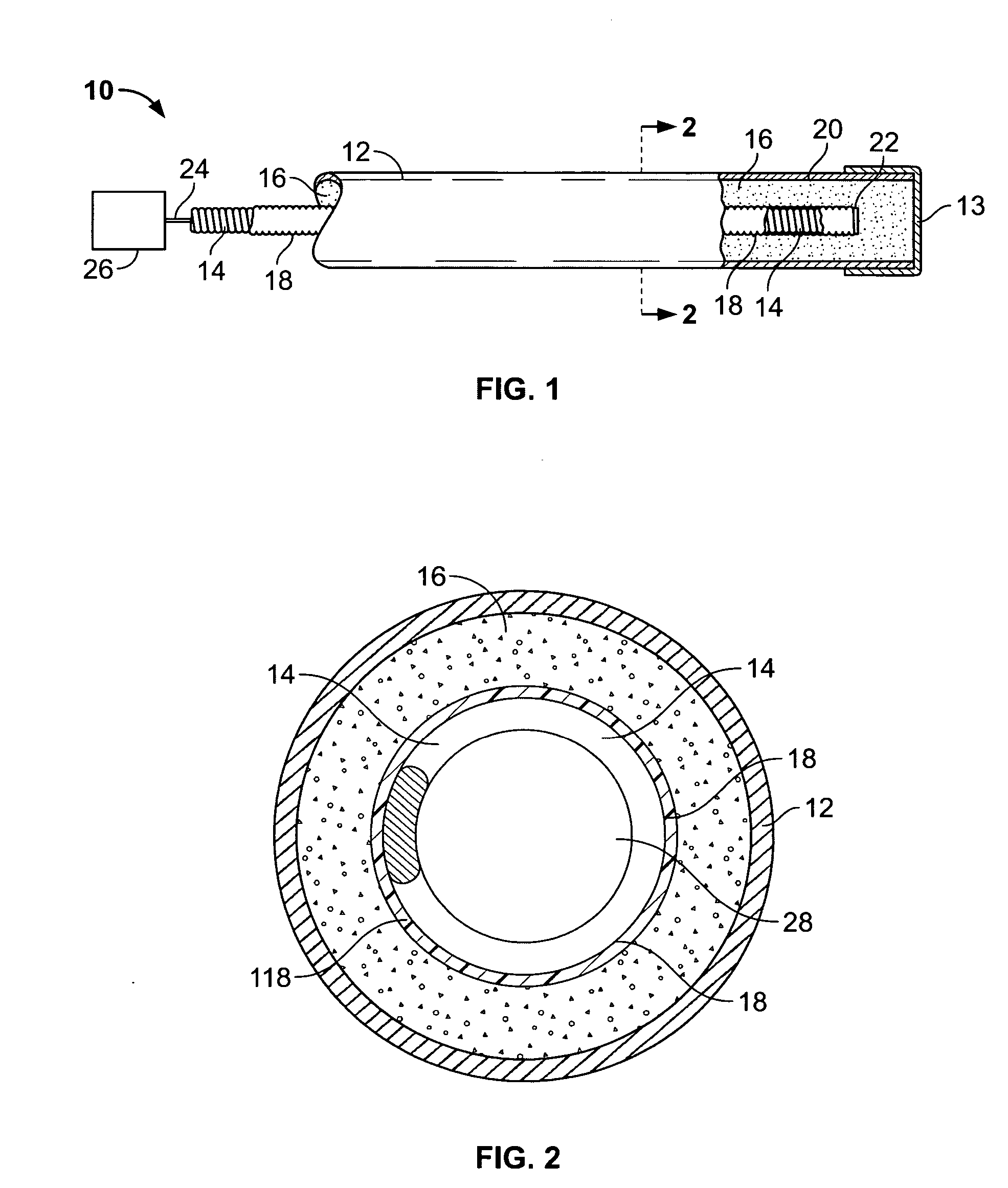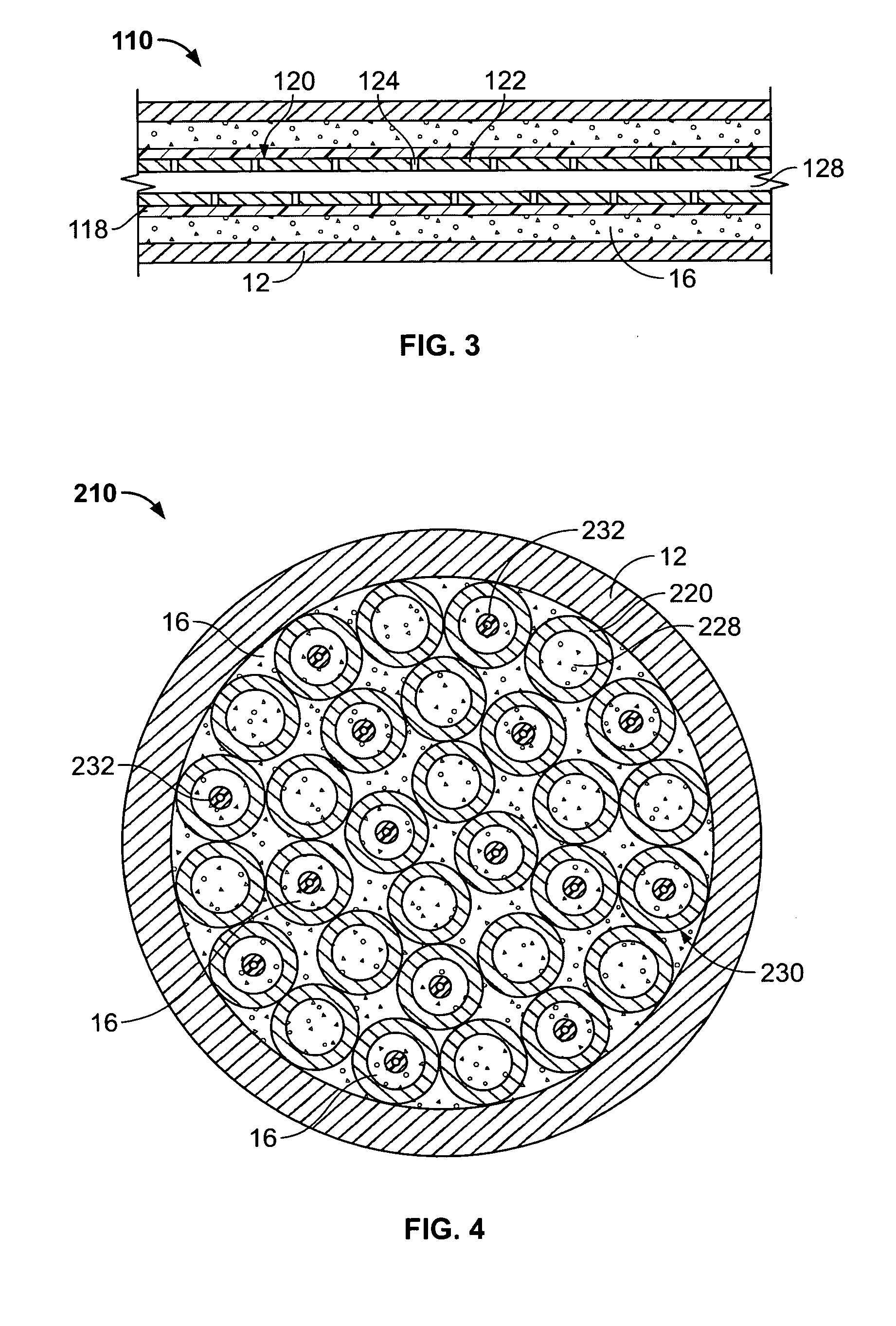Flexible and semi-permeable means of hydrogen delivery in storage and recovery systems
a technology of hydrogen delivery and storage system, which is applied in the direction of electrochemical generators, lighting and heating apparatus, packaging goods types, etc., can solve the problems of reducing the weight of the container, reducing the storage method, and requiring comparatively bulky storage containers
- Summary
- Abstract
- Description
- Claims
- Application Information
AI Technical Summary
Benefits of technology
Problems solved by technology
Method used
Image
Examples
second embodiment
[0029] The conduit wall 122, being made of a sturdy material, provides a structural member that can withstand the expansion of hydride while maintaining its integrity and retaining the capability to transfer hydrogen gas through the passage 128 longitudinally. Simultaneously, the film 118 permits only hydrogen to penetrate into the hydride material 16. The remaining elements of the second embodiment may have structures similar to that shown in FIG. 1, and may have other modifications, for example, elements to accommodate hydride expansion, as described above.
third embodiment
[0030] In a third embodiment, a unit 210, shown in a transverse, cross-sectional view in FIG. 4, the spring 14 shown in FIG. 1 may be replaced by a plurality of sturdy, rigid tubular members 220, so as to provide added protection of the conduit material by a compartmentalization of the separate passageways provided for hydrogen dispersal. These members may be identical to the flexible springs in the prior art devices, but having a smaller diameter, that are permeable to gas through the coils of the sturdy, rigid tubular members 220.
[0031] Unlike the prior art devices of the aforementioned '114 patent, however, or the second embodiment illustrated in FIG. 3, the tubular members 220 do not have a surrounding sheath of material to retain the physical barrier to the transposition or shifting of the hydride material 16 contained within the outer wall 12 of the unit 210. Instead, each of the tubular members 220 has a central passage in the form of a central tubular space. This central tub...
PUM
| Property | Measurement | Unit |
|---|---|---|
| Thickness | aaaaa | aaaaa |
| Force | aaaaa | aaaaa |
| Flexibility | aaaaa | aaaaa |
Abstract
Description
Claims
Application Information
 Login to View More
Login to View More - R&D
- Intellectual Property
- Life Sciences
- Materials
- Tech Scout
- Unparalleled Data Quality
- Higher Quality Content
- 60% Fewer Hallucinations
Browse by: Latest US Patents, China's latest patents, Technical Efficacy Thesaurus, Application Domain, Technology Topic, Popular Technical Reports.
© 2025 PatSnap. All rights reserved.Legal|Privacy policy|Modern Slavery Act Transparency Statement|Sitemap|About US| Contact US: help@patsnap.com



